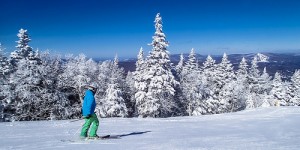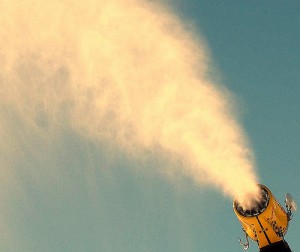Protecting One of Nature’s Most Scenic Traditions
For years, ski areas have provided a quality outdoor recreation experience. But in order to maintain that quality experience, the ski industry is working to maximize efficiency and lower costs in the face of increasing environmental concerns. The majority of these initiatives are in the energy sector.

Mountains are teaming up to keep their scenic adventures accessible. (Photo by stillwellmike; CC BY-SA 2.0)
It often goes unnoticed by those enjoying the expansive, white slopes, but the amount of energy required to keep mountains open is unparalleled in the resort industry. Thanks to the snow cannon, invented in 1950 by New York engineers, Art Hunt, Dave Richey and Wayne Pierce, ski resorts can bring in the green (and white) all season long. But what began as a clever way to avoid Mother Nature’s unpredictability also has become a stopgap measure to defend against shorter and warmer ski seasons.
Climate Change: A Daunting Challenge
According to the 2012 report, “Climate Impacts on the Winter Tourism Economy in the United States,” the $66 billion dollar winter sports industry, which supports more than 960,000 jobs across the country, could be in jeopardy. At Lake Tahoe for example, spring now arrives two and a half weeks earlier then it did a decade ago. Some computer models predict that other prominent ski areas on both coasts will receive 40 to 70 percent less snow by 2050. Low snowfall years in the last decade alone have cost the industry on average $1 billion and as many as 15.2 million fewer skier visits.
Ski resorts, however, aren’t going down without a fight. In the past 12 years, more than 190 resorts have endorsed The National Ski Area Association’s Environmental Charter , which states that sustainable best practices will be fundamental to the ski industry’s long term success. The NSAA, which has correlated sustainability and profit, has taken considerable interest in products and systems that enable ski resorts to protect the environment through optimized efficiency.

Without artificial snow the skiing would be a thing of the past. (Photo by Tim Gillin; CC BY-SA 2.0)
Making Sure the Snow Keeps Falling
Not surprisingly, the snowmaking process is drawing the most attention. This complex process involves pumping thousands of gallons of water a minute and compressing and cooling air before channeling the water and air into to snowmaking guns. When natural snow is scarce, mountain engineers often keep this energy-indulgent process running around the clock to ensure enough snow is available for skiers. A Finnish Study reports that the amount of energy required to make enough of the white stuff equates to roughly half of a total slope’s operating budget.
With great expenditures, however, comes the prospect of great savings; ski areas in Vermont alone save $2 million annually on their energy costs – 91% of which are the result of investments in efficient snow making practices.
UST Putting the Most Efficient Systems to Use
With a rising demand for energy savings, and with the ski resort off-season a month away (the time most resorts renovate and retrofit their systems), UST plans to provide their proven technology to an industry in need of efficient pumping and cooling systems.
The ski industry is important to the United States’ economy, and it is critical that ski areas throughout the country continue to improve their bottom line by leading the way in innovative, energy-efficient, and cost-saving technologies.

